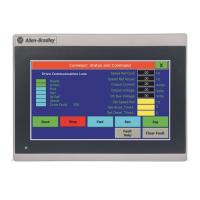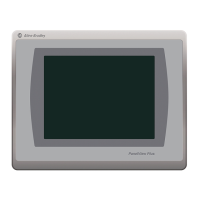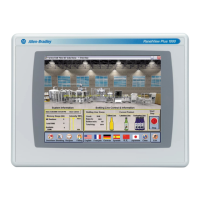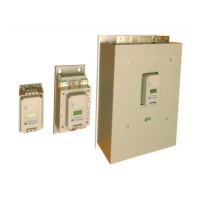Rockwell Automation Publication 2713P-UM001G-EN-P - May 2022 107
Chapter 7
Equipment Wash Downs
Ship the Terminal
If you ship the enclosure with the terminal installed, make sure that the terminal
is properly secured and protected against damage from impact, sharp objects, or
abrasive materials.
Restore Factory Defaults
Restore a terminal to its default settings to refresh the terminal or to recover from
an invalid application configuration. The restore process does not affect the
firmware revision on the terminal.
The restore procedure performs the following actions:
• Removes the user application
• Restores the terminal settings to their default state
ATTENTION: Do not use a high-pressure washer for cleaning the front bezel of
the terminal. A high-pressure washer can damage the terminal.
Do not use a high-pressure washer for cleaning vented enclosures. Water can enter
the enclosure and damage the terminal and other equipment.
ATTENTION: Rockwell Automation is not responsible for damage to a product
that is shipped or transported while installed in a panel or enclosure.
ATTENTION: The process that restores factory defaults also removes some data.
• Upload the application with the View Designer application.
• Record the terminal settings so you can update them after the restore.
TIP If a terminal stalls at the progress indicator after a restart and does not load the
application or configuration screens, you can restore the factory defaults.
Table 27 - Factory-default Terminal Settings
Terminal Settings Factory Default Setting
Backlight intensity: 1…100% 100%
Screen saver
• Enabled or disabled
•Timeout
• Dimmer: 1…100%
• Disabled
• 10 minutes
• 10%
Touch screen calibration Factory calibrated
Ethernet
• DHCP-enabled or static IP address
• Speed: 10 Mbps, 100 Mbps, Auto sense
• Duplex: Half, full, auto sense
• DHCP-enabled
• Auto sense link speed
• Auto sense duplex mode
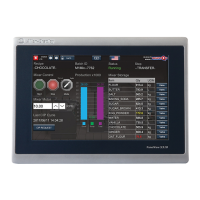
